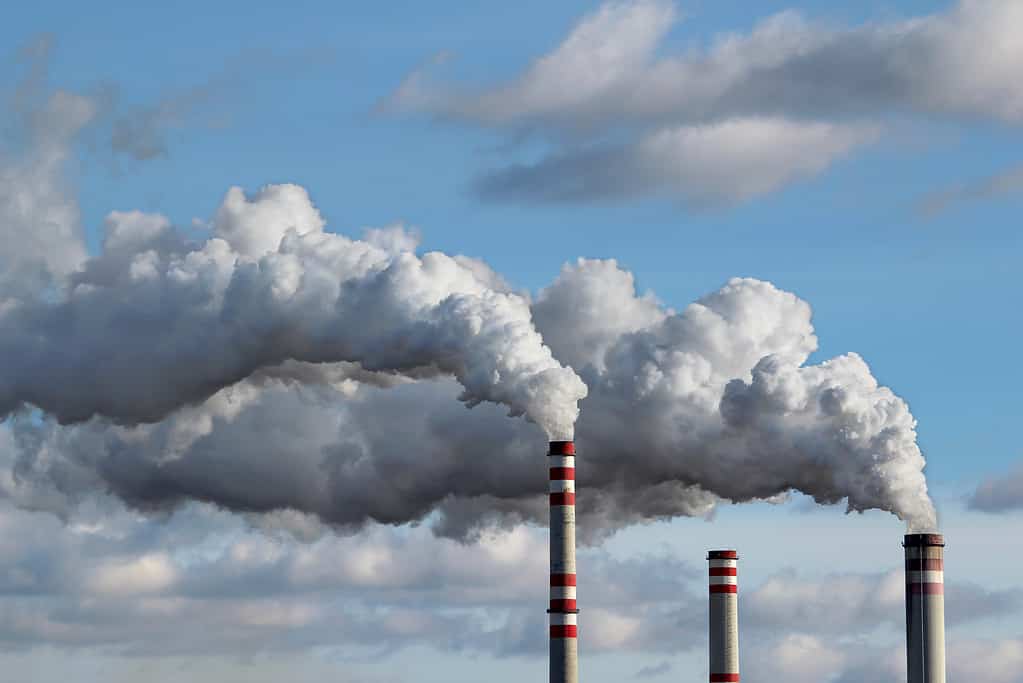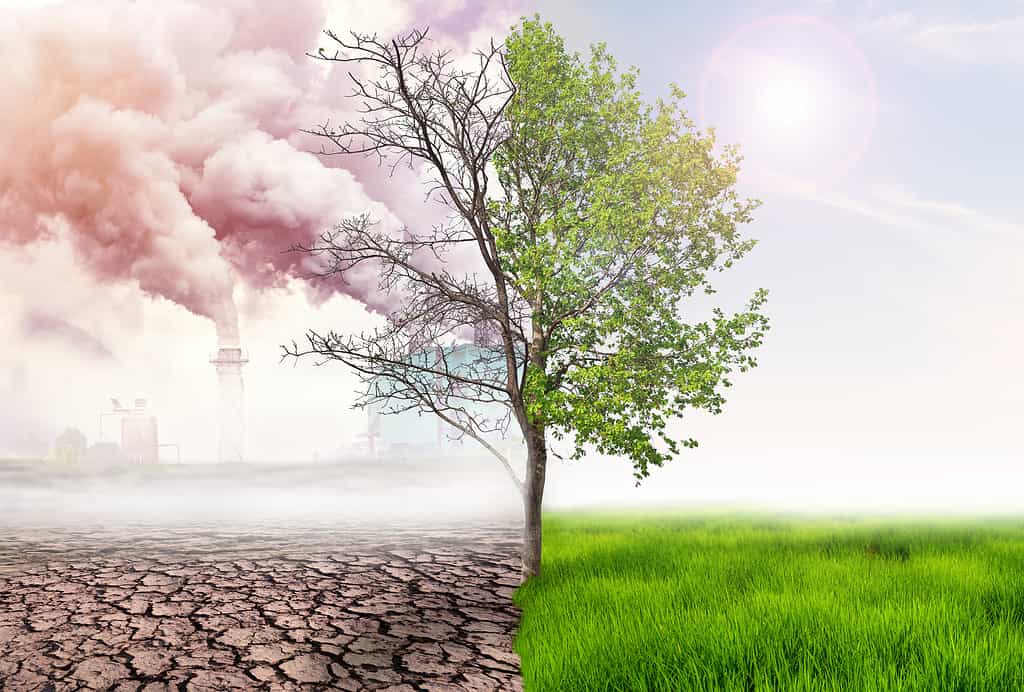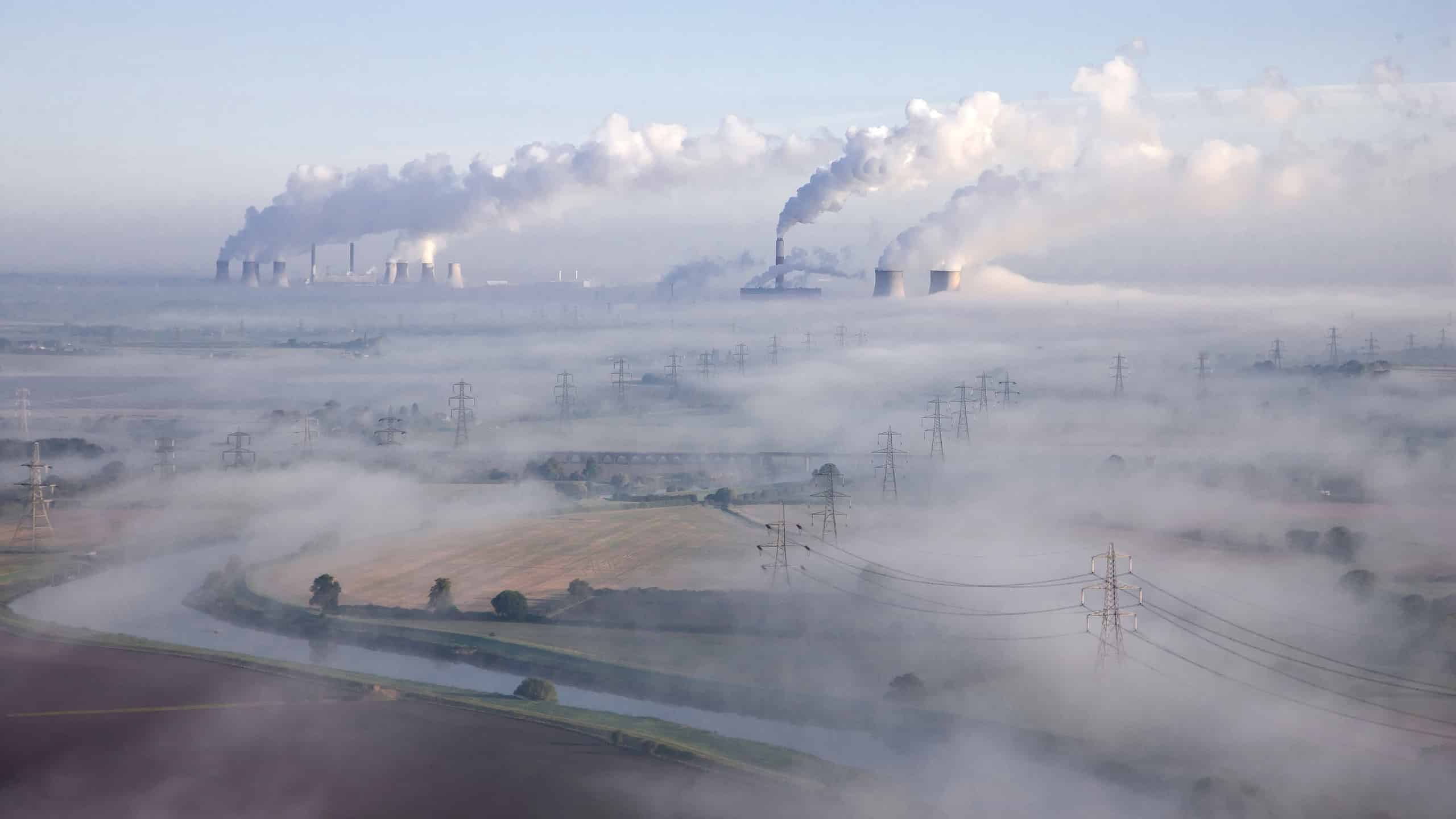Harrisburg is the Pennsylvania town with the state’s worst air quality. But for most people, Pennsylvania, or “The Keystone State,” is a great place to live. It features plenty of scenic locations, rolling hills, lush forests, glorious mountains, and magnificent waterfalls to explore. Additionally, the cost of living here is 2% lower than the national average, allowing you to spend less than you earn and funnel more toward your savings account.
What’s more, Pennsylvania is among the nation’s most productive industrial centers for steel and coal. While this has amazing economic perks, it has led to a significant issue — particle and ozone pollution. Despite the state combating this problem for many years, at least five of its cities are – tragically – still among the most polluted regions in the US.
Here’s a deep dive into the Pennsylvania town with the worst air quality. Read on to learn the contributors to the elevated pollution level in that area (and others like it), the potential ramifications of this situation, and a few measures that could help change it.
Which Town Has the Worst Air Quality in Pennsylvania?
As mentioned before, Pennsylvania’s capital, Harrisburg, has the state’s worst air quality; it has a disappointing Air Quality Index (AQI) of 77. Unfortunately, this is not a shocker because the city has been known to experience more days of pollution than many other regions in the state. For instance, in 2018, its air pollution level was among the 25th highest in the nation.
An AQI level below 50 is pretty standard. However, the higher the AQI level, the more toxic the air quality. This translates into a greater health hazard for residents living in the affected area and a poorer grade of its bad air days, explaining why Harrisburg’s have received an “F” for years despite the city’s constant efforts to improve it.
In 2020, the Environment America Research & Policy Center and Frontier Group released a report indicating that Harrisburg had seen 97 days of polluted air that year. At the time, Lancaster had experienced 107 days and had the worst air quality in the state.

Why is the Air Quality in Harrisburg Bad?
Several factors contribute to Harrisburg’s terrible air quality. One is ground-level ozone or smog, usually formed when sunlight reacts with emissions from burning fossil fuels. Remember, this city boasts many industrial and manufacturing companies whose operations can’t help but release harmful greenhouse gases into the atmosphere, including methane, carbon dioxide, and carbon monoxide.
Again, Harrisburg is home to roughly 50,000 people. A considerable chuck of that population frequently drives to work, school, and other locations, increasing the level of poisonous gases in the air, including nitrogen oxides. When the conditions are right (the presence of sunlight), the emissions are converted into ozone (O3), which can harm humans by triggering respiratory health complications.
Soot, or particulate matter, is another air pollutant in Harrisburg. Typically, it comprises tiny particles of things such as:
- Chemicals
- Soil
- Pollen
- Dust
- Smoke
Other Locations with Poor Air Quality in Pennsylvania
Besides Harrisburg, the following cities also record bad air quality at various times of the year:
- Robesonia
- Freemansburg
- Bethlehem
- Columbia
- Mechanicsburg
- Allentown
- Camp Hill
- Glenside
- Reading
How the Weather Impacts Air Quality
It’s worth noting that the air quality of a place may change throughout the day due to the weather. Usually, different aspects of the latter affect the pollutant concentration or amount of ozone and particulates in the atmosphere. These include:
Rain
Rainfall improves the air quality of a place by triggering wet deposition. The process reduces air pollutants like pollen by depositing them into the ground. This is why some authorities leverage aerial sprays of water to fight air pollution when their AQI levels are too high.
Higher Temperatures and Sunlight
Regions with high temperatures and plenty of sunlight often have the worst air quality for several reasons. For starters, sunlight sparks chemical reactions in pollutants, facilitating smog development to lower air quality.
In addition, hot and dry conditions increase the chances of fires, especially in outdoor environments. Unfortunately, this only adds to the list of possible pollutants. Things worsen if a town experiences a heat wave because the air remains stagnant, meaning the poor quality or polluted air remains undispersed.
Cold Climate
Interestingly, cold weather also worsens the air quality of a place. So, here’s what happens during winter. The low temperatures force the warm air to rise, trapping a layer of cold air and harmful pollutants, such as ozone, in the atmosphere.
Besides, people tend to burn more fuel during cold climates to warm themselves. Others will even drive around idly to defrost their cars, releasing more carbon monoxide and carbon dioxide into the air.
Wind
Although wind doesn’t affect ozone pollution, it influences the quantity of particulate matter in the air. If brisk enough, it scatters the pollutants to improve air quality. But your location might come into play here. For instance, when you’re downwind of a massive forest fire. Chances are, the wind will bring all the ash and smoke your way, forcing you to receive the worst air quality.
Effects of Bad Air Quality
Poor air quality negatively impacts every aspect of our environment. Here are the main problems arising from air pollution in Pennsylvania and other parts of the world.

Human Health Complications
Bad air quality causes a series of symptoms in human beings, depending on the length of exposure. If you’ve been breathing polluted air for a while, you could suffer from the following:
- Coughing
- Wheezing
- Dizziness
- Fatigue
- Nose, eye, and throat irritation
- Chest pain
Long-Term Exposure to Bad Air Quality
People living in areas with the worst air quality for a long time may experience these adverse health issues:
- Cardiovascular problems
- Liver and spleen damage
- Lung cancer
- Congenital disabilities
- Kidney disease
- Nerve and brain damage
- Serious respiratory problems such as asthma and emphysema
Regrettably, prolonged exposure to poor air quality also causes death. In 1952, a 5-day killer smog engulfed London, claiming the lives of about 12,000 individuals and confining 150,000 others to medical facilities within the city. Furthermore, statistics from the World Health Organization indicate roughly 7 million people worldwide die annually from health complications caused by air pollution.
Poor Quality of Life for Animals
Air pollution also tremendously affects animals. Here are several conditions they might develop after continuous exposure to bad air quality:
- Low reproductive success/ infertility
- Respiratory diseases like asthma due to lung damage
- Allergy symptoms such as itchiness and skin irritation
- Liver failure
- A weaker immune system
- Cardiac arrests, especially in dogs
- Changes in behavior and physiology in amphibians such as toads
How Bad Air Quality Alters Animal Habitat and Food Supply
Sad to say, air pollution does not just affect the health and behavior of animals — it also ruins their habitats and alters their food supply. For instance, insects are susceptible to bad air quality and tend to relocate as soon as they detect it. But then, some living organisms in the species’ former homes depend on them for food, meaning their migration impacts them negatively.
Admittedly, every member of the food chain is affected by air pollution. Think about the bears at the top of the web. These gentle, tolerant – and sometimes empathetic – animals are prone to bioaccumulation if they consistently eat other wildlife already affected by air pollutants. Eventually, the food sources poison the omnivorous species, triggering issues such as organ failure, alleviated stress levels, and even death.
Can Poor Air Quality Cause Extinction of Animals?
Fresh air is a necessity for most animals. But some need it more than others as they’re more affected by its absence and risk dying out due to long-term exposure to bad air quality. Examples of these are birds. More often than not, air pollution damages their respiratory systems; some even die after inhaling soot particles.
Abnormal Plant Growth
Like humans and animals, plants also suffer the dire consequences of bad air quality. For starters, ground-level ozone often leads to chlorosis or yellowing of the leaves. It minimizes chlorophyll concentration and deters the living organisms from making enough food, causing stunted growth or even death.
Intriguingly, some species close their stomata to protect themselves against the harmful effects of ozone damage. Even so, when they do that for too long, they cannot access carbon dioxide for photosynthesis, resulting in the same devastating outcome — the inability to make enough food.
Failure to Bloom
Prolonged exposure to air pollutants like smog also prevents plants from flowering. Instead of utilizing the available resources to blossom, they use them to combat the effects of poor air quality. This explains why trees or flowers in polluted areas, such as along busy roads, take more time to bloom than others in a farm in the countryside.
Climate Change
Furthermore, harmful air pollutants contribute to climate change. Remember, one of the most important roles of plants in our ecosystem is to absorb carbon dioxide. But they can’t take in much of it when bad air quality affects their health. Therefore, the excess CO2 enters the atmosphere to damage the ozone layer and accelerate global warming.
Inefficient Agroecosystems
Air pollution also drastically reduces crop yield by changing the competitive balance among species and the components of the plant community. If these living organisms can’t photosynthesize sugars from water and carbon, they barely grow to maturity, automatically translating into reduced produce. If you’re a farmer hoping to bring in profits, your dream will undoubtedly remain beyond reach.
At the same time, you could suffer unimaginable losses. For example, according to NASA, the US lost almost $2 billion worth of soybeans annually ten years ago due to ozone damage. Regrettably, this also affected the food supply of both animals and humans.
Formation of Acid Rain
Regions with the worst air quality may receive acid rain. Usually, it results from a chemical reaction triggered by a mixture of air pollutants like nitrogen oxides, water, oxygen, and other harmful compounds. Wind and air currents eventually move these substances high into the atmosphere, increasing the acidity of rainfall.
Unfortunately, acid rain affects all living things. For example, it rids the soil of useful minerals and nutrients, negatively impacting plant growth. Even worse, this acidic rainfall removes nutrients from plants’ foliage, leaving them with ugly brown patches. Consequently, it limits their ability to absorb sunlight for photosynthesis, making them too weak to withstand harsh climatic conditions.
Practical Tips to Improve Air Quality
Given the dire effects of bad air quality on living things and the environment, combating pollution in Pennsylvania and other affected regions worldwide is critical. How can we enhance the quality of our air? Consider these helpful strategies:
Walk More Often
If you live near your workplace or school, consider walking to and from these locations instead of driving daily. Though this might sound trivial, it significantly improves air quality because it translates into fewer fuel emissions.
Supposing walking isn’t an option, use public transport since it reduces the number of vehicles on the road, minimizing the level of greenhouse gases in the air. Walking also presents other amazing benefits, such as:
- It enables you to save money because you don’t need to buy fuel.
- It boosts your physical and mental health.
- It improves your balance.
- It helps to manage conditions such as diabetes and cardiovascular problems.

If you live near your workplace or school, consider walking to and from these locations instead of driving daily.
©iStock.com/bee32
Switch to LED Lighting
LED lights are up to 80% more energy efficient than traditional bulbs. This means they produce lower carbon emissions and can help to control air pollution in our homes. Apart from improving air quality, these lighting options reduce your power expenses since they consume minimal electricity.
Never Burn Your Garbage
Refrain from burning your garbage to control air pollution in your area. The truth is, waste materials such as plastics, old clothes, and treated or painted wood produce toxic emissions when you ignite them, lowering the air quality. On top of that, setting your trash on fire doesn’t dispose of it; it just transforms it into an even more harmful form.
Recycling is the safest waste disposal method. Be sure to put your garbage in the right containers, depending on your waste type, and contact a reliable recycling program in your area. If you need clarification on the materials that can be reused, the system can guide you.
Here are other effective ways to boost air quality:
- Plant more trees and care for them.
- Prevent wildfires by completely putting out campfires, reporting unattended fires, and keeping flammable items away from the wild, especially during dry conditions.
- Use low-chemical products, including perfumes and paints.
- Campaign for clean air and support programs fighting air pollution.
Take Steps To Improve Air Quality
Living in Pennsylvania towns with bad air quality is scary. You risk suffering from a plethora of dangerous health conditions that can change your life for the worse. But thankfully, you’re not helpless. You can minimize air pollution in various ways, such as driving your car less often and recycling your garbage instead of setting it ablaze. At the same time, protect yourself against the harmful effects of poor air quality by spending minimal time outdoors.
Again, take measures to improve indoor air quality, even when staying in some of the less polluted towns in Pennsylvania. You can do that by switching your air filter often to enhance the efficacy of your HVAC system. Cleaning your carpets and rugs regularly is another great idea, especially if you live with your furry pal. It prevents pet dander and dust accumulation, which causes bad air quality. Getting a few air-purifying house plants like aloe vera is also an amazing tip to detoxify your space.
Where is Harrisburg Located on a Map?
Harrisburg is the capital of Pennsylvania and is located alongside the Susquehanna River. The National Civil War Museum showcases interactive exhibits and re-enactments that provide insights into both perspectives of the conflict during the Civil War.
Here is Harrisburg on a map:
Thank you for reading! Have some feedback for us? Contact the AZ Animals editorial team.








